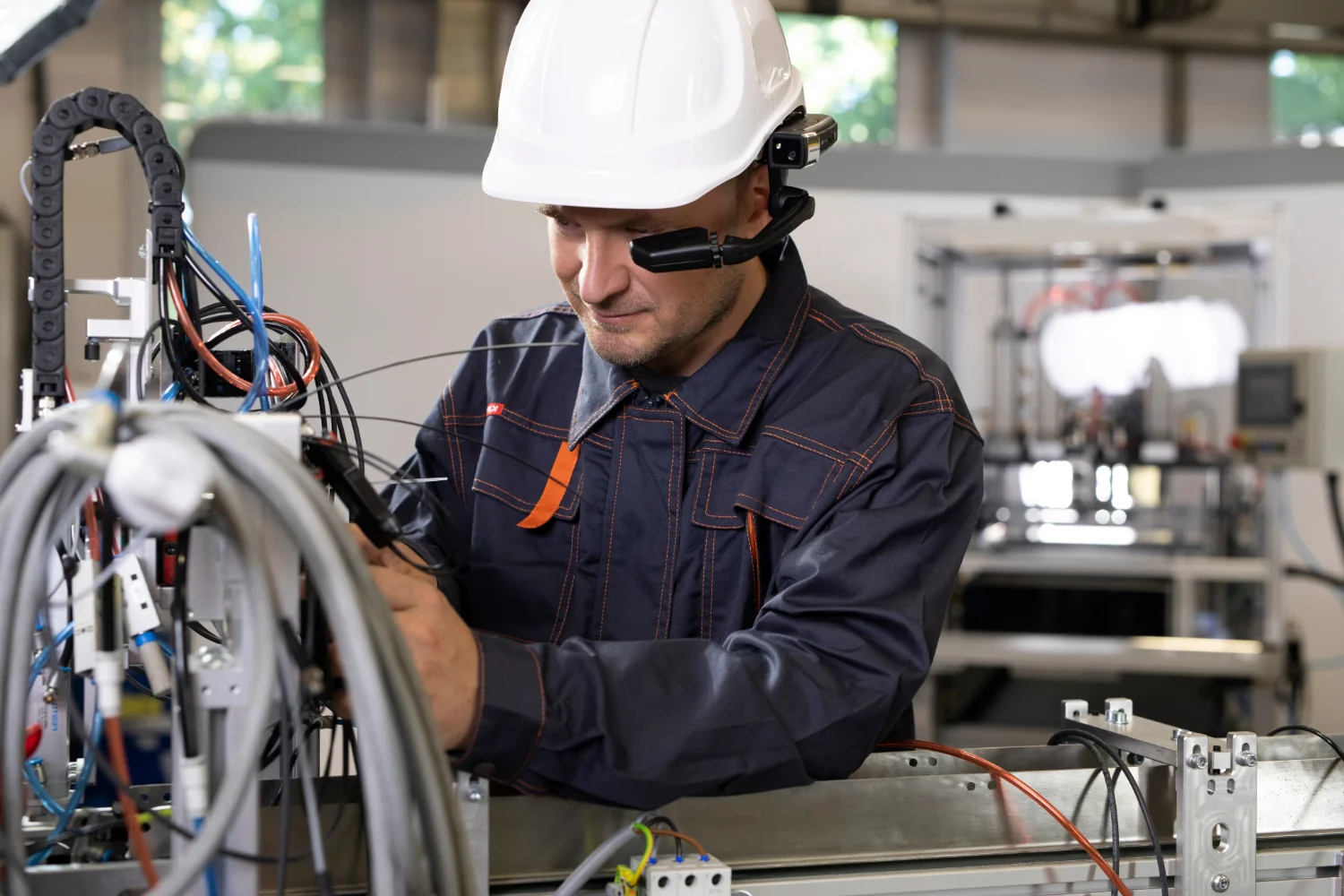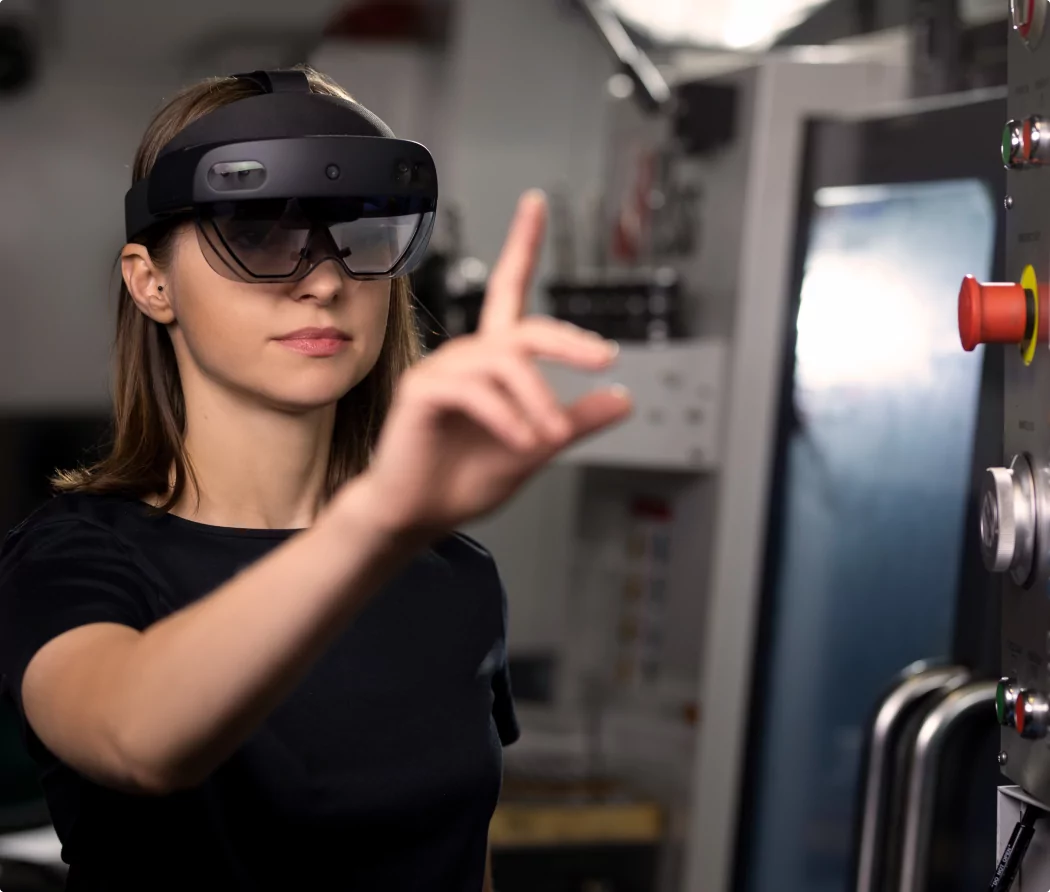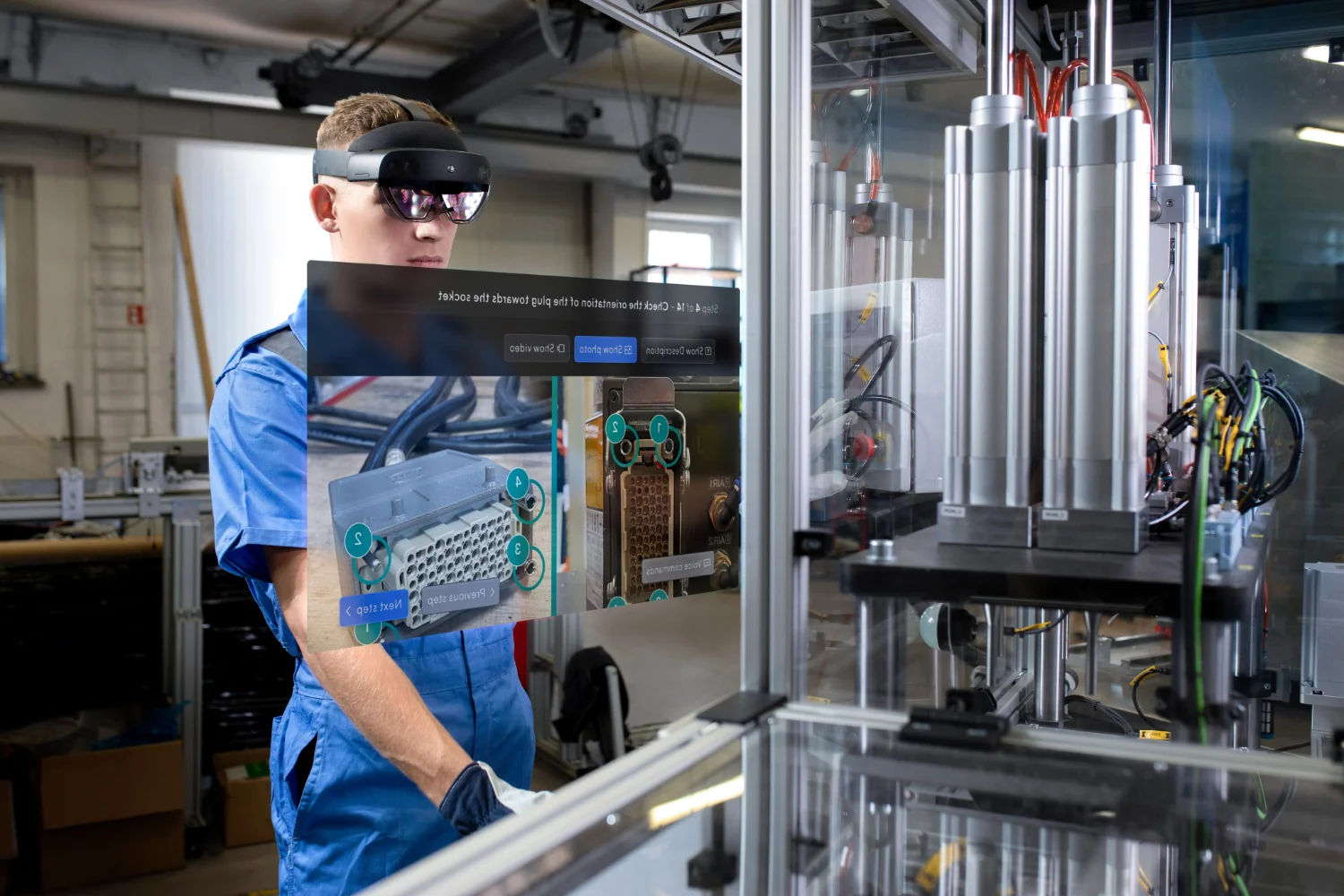



One of the areas which adopted augmented reality pretty quickly is broadly understood education, employee training in production companies in particular. Traditional staff training with real machines, equipment, and trainers is time-consuming, expensive, and might involve risks of potential mistakes and equipment damage. AR training helps to cut these costs significantly and shorten the time needed to prepare new hires to start working efficiently.
At NeuroSYS we build custom AR training solutions for our clients but we’ve also created a ready-made system. It allows you to build AR training without any programming skills. Our system allows users to create AR training with a simple drag-and-drop editor. The end result is AR training that guides employees, showing them what and how exactly should be done and allowing them hands-free operation in a real work environment. For more information go to Samelane, our learning management system available with AR.

Technical breakdowns or machine failures without immediate experts’ support can inflict severe losses on business (especially in manufacturing). With AR they experts can share their know-how remotely, without the need to travel to get to the site. This not only saves time, but also can be the only support available during the pandemic and imposed restrictions.
A dedicated software installed on AR devices can link field technicians with remote experts for hands-on instruction sessions. Consultants get access to the technicians’ field of view in real-time and can provide them with information and instruction – both visual and verbal – to solve the issue. With AR, machine installation, maintenance, and technical support can be assisted remotely.

Everybody knows the Pokémon Go game that dates back to 2016. It was the first AR game that assembled masses of devoted players. Augmented reality games are appreciated for the immersive experience – the ability to merge the real world with virtual objects and characters. They can work with headsets, smart glasses, smartphones, and tablets. Yet another example is creating augmented reality applications running on a variety of AR devices.
A surge in AR apps’ popularity is particularly visible in industries such as manufacturing, healthcare, e-commerce, real estate, and logistics. Their purpose is to create highly useful tools and engaging experiences for their customers – and gain a considerable advantage over the competition. Some of the examples of AR use are smart mirrors, apps showing new furniture in customers’ homes, or tracking packages in logistics. When augmented reality on the phone is considered, we use a multi-platform environment Unity.

You might not know what augmented reality solutions you need – and that is completely understandable. Since we’ve worked with most of the well-known AR equipment and AR software platforms, we know their advantages and drawbacks. We will help you in choosing the best augmented reality glasses and SDKs for your business needs.
Thus, you can discover the possibilities of AR to the fullest and avoid costly trials and errors, testing limitations of different devices and frameworks. We always keep in mind not to make you reliant on one headset provider, so with one app you can become independent from the manufacturer and switch to better equipment in the future at the lowest cost possible.




Augmented reality has the power to enhance a wide array of experiences – both for your employees and customers. Take AR apps in the workplace as an example. The training is more effective, engaging, and faster. Your employees can be guided every step of the way by your AR glasses and learn while working in a real environment.Moreover, they allow remote support to help to solve urgent and serious problems. Your customers gain new experiences as well, such as virtual try-on (Gucci, ASOS), apps showing how the new furniture or paint colors would look like in their homes (IKEA Place), applying makeup products on your face (Sephora Virtual Artist). All given examples help customers to purchase goods that will be the best fit and increase their satisfaction.
With augmented reality, you can build innovative products that minimize the risk in numerous business areas. For example, if you’re a manufacturer, AR training lets your employees learn how to perform their tasks as in reality, standing by a machine. With augmented reality goggles, they can repeat the activities presented in detail. All information can be displayed directly on the AR glasses so employees can learn how to operate a machine with their hands free, which is far less risky than learning from the manuals only and having a limited time with a trainer.With AR apps you can minimize the risk of customer dissatisfaction – since they can try on/visualize your product in their target environment beforehand. This translates into a lower product return rate in e-commerce.
Things that take place physically, in the real world, can’t be easily scalable. You won’t open new stores or conduct the next 100 training sessions for your staff in a day. To satisfy a growing demand for your products/services in reality you need to devote a considerable amount of time and money.With augmented reality applications, you can scale your services quickly – your changing rooms can fit all users at the same time, all your employees can learn irrespective of the classroom size and trainers’ availability. Your app can be used anywhere around the world, no matter where your departments are located.
A variety of industries can take advantage of augmented reality to improve their internal processes, increase employee or customer/user engagement, and boost sales.It would be impossible to list all of the possible applications, but you can find AR in manufacturing, sales, gaming, fashion & beauty, education, automotive, retail, marketing, travel, architecture, or interior design. You can use it in onboarding and staff training to increase their effectiveness.